Multiple Reflections
Mirrors Reflecting Other Mirrors
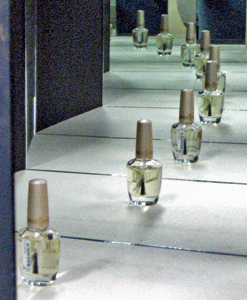

A mirror reflects everything in front of it, including another mirror. What you see depends on how the mirrors are placed.
If you place two mirrors at an angle, you increase the number of reflected images you can see. Depending on the angle you choose, you can see a number of unbroken reflections and one or more composite or partial reflections. When the mirrors are set at 90º and 60° degrees exactly, the composite reflection is evenly divided so it looks like a single image.
In this image, two mirrors are not exactly parallel to each other. Having one mirror at a slight angle causes the infinite line of images to curve.
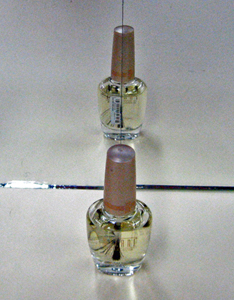

Two mirrors in a straight line reflect an object only once.
The angel between the mirrors in this photo is straight - 180º.
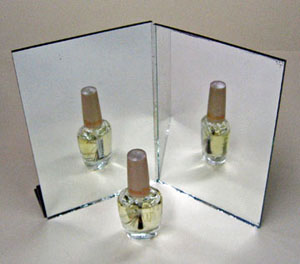

Two mirrors set at any angle between 180º and 90º reflect an object 2 times.
As the angle approaches 90º, you see one mirror reflected in the other, but you do not see additional reflected objects.
The angel between these mirrors is 120º.
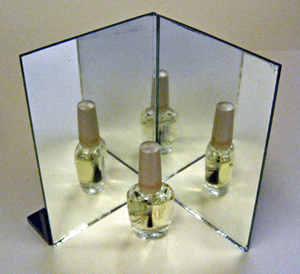

Two mirrors at a right angle (90º) show two complete reflections and one composite reflection.
An angle less than 90º shows two straight reflections and two partial reflections.
The angel between these mirrors is 90º.
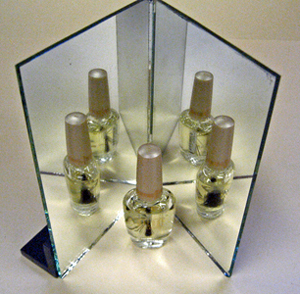

At 72º you see 4 complete reflections.
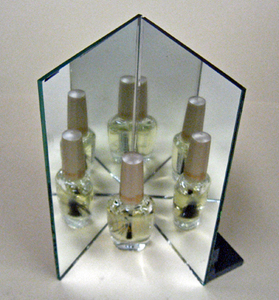

At 60º you see five reflections – four straight and one composite.
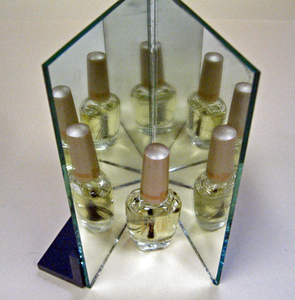

At 45º you see the object reflected 3 times in each mirror and one composite reflection for an apparent total of 7 reflections – or 8 if you count the object itself.
Unless the mirrors are very large, it is difficult to see into an opening that is less than 45º.


When two mirrors are parallel to each other, the number of reflections is infinite.
If one mirror is placed at a slight angle to the other, the infinite reflections appear to curve - as you can see above.
.
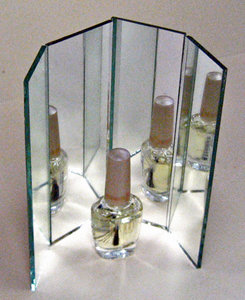

Using more than two mirrors increases the number of reflections, but what you see depends on where you stand. The number of complete and partial reflections changes as you view the mirror from different angles.
Changing the angle of incidence (the line between your eye and the mirrors) changes the the number of reflections you see.

